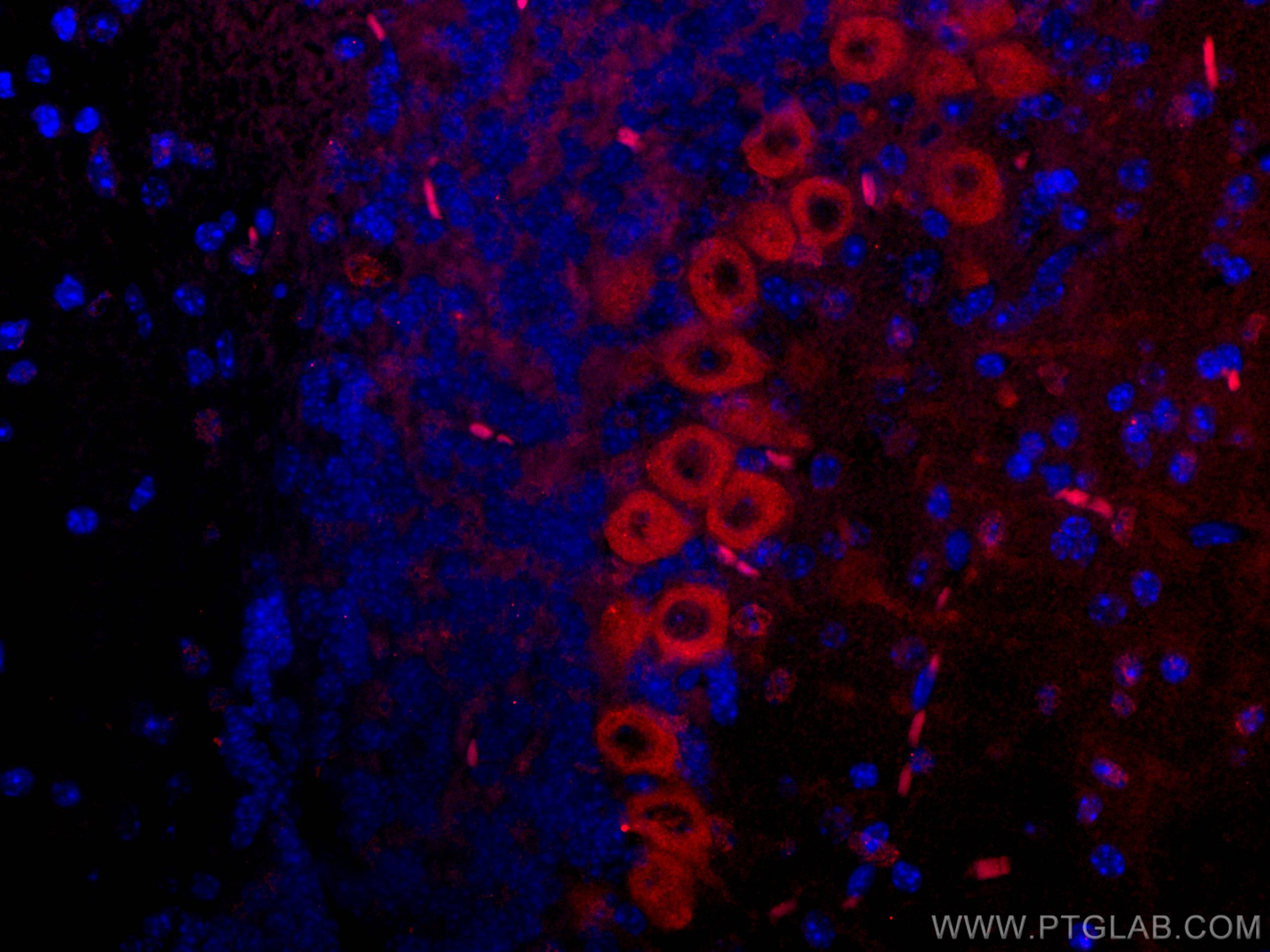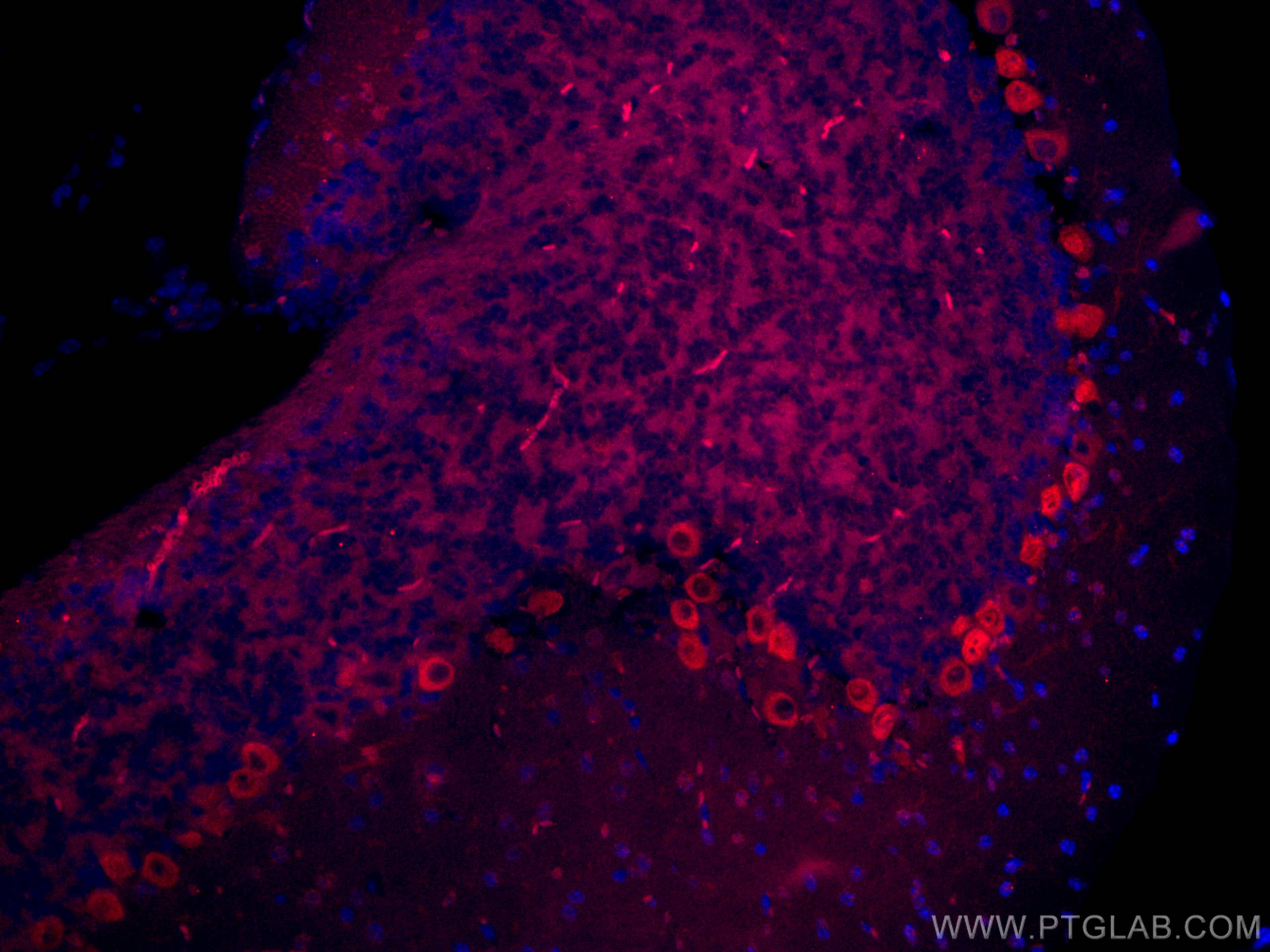Tested Applications
| Positive IF-P detected in | mouse cerebellum tissue |
Recommended dilution
| Application | Dilution |
|---|---|
| Immunofluorescence (IF)-P | IF-P : 1:50-1:500 |
| It is recommended that this reagent should be titrated in each testing system to obtain optimal results. | |
| Sample-dependent, Check data in validation data gallery. | |
Published Applications
| IF | See 1 publications below |
Product Information
CL594-67243 targets MYH10 in IF-P applications and shows reactivity with Human, mouse, rat samples.
| Tested Reactivity | Human, mouse, rat |
| Host / Isotype | Mouse / IgG2a |
| Class | Monoclonal |
| Type | Antibody |
| Immunogen |
CatNo: Ag17069 Product name: Recombinant human MYH10 protein Source: e coli.-derived, PET28a Tag: 6*His Domain: 1183-1322 aa of BC150634 Sequence: QEVAELKKALEEETKNHEAQIQDMRQRHATALEELSEQLEQAKRFKANLEKNKQGLETDNKELACEVKVLQQVKAESEHKRKKLDAQVQELHAKVSEGDRLRVELAEKASKLQNELDNVSTLLEEAEKKGIKFAKDAASL Predict reactive species |
| Full Name | myosin, heavy chain 10, non-muscle |
| Calculated Molecular Weight | 1985 aa, 230 kDa |
| Observed Molecular Weight | 200-230 kDa |
| GenBank Accession Number | BC150634 |
| Gene Symbol | MYH10 |
| Gene ID (NCBI) | 4628 |
| RRID | AB_2920102 |
| Conjugate | CoraLite®594 Fluorescent Dye |
| Excitation/Emission Maxima Wavelengths | 588 nm / 604 nm |
| Form | Liquid |
| Purification Method | Protein A purification |
| UNIPROT ID | P35580 |
| Storage Buffer | PBS with 50% glycerol, 0.05% Proclin300, 0.5% BSA, pH 7.3. |
| Storage Conditions | Store at -20°C. Avoid exposure to light. Stable for one year after shipment. Aliquoting is unnecessary for -20oC storage. |
Background Information
MYH10 (non-muscle II-b, NM IIB) is a member of non-muscle myosin II which plays fundamental roles in the maintenance of cell morphology, cell adhesion, and migration, as well as cell division. MYH10 is mainly present in nerve cells, megakaryocytes, and other non-muscle cells. It has been reported to mediate centrosome reorientation during cell migration and contribute to ciliogenesis. Overexpression of MYH10 has been observed in breast cancer.
Protocols
| Product Specific Protocols | |
|---|---|
| IF protocol for CL594 MYH10 antibody CL594-67243 | Download protocol |
| Standard Protocols | |
|---|---|
| Click here to view our Standard Protocols |






